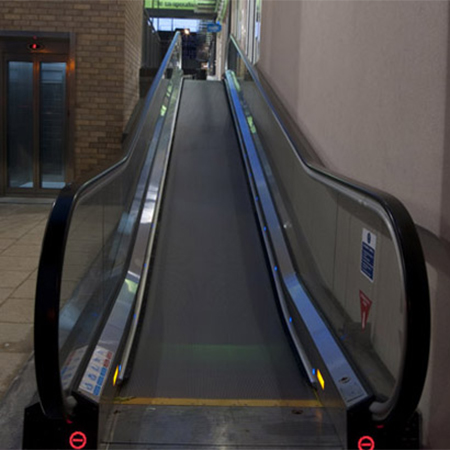When a project requires a people moving lift, there are some questions to consider in order to pick the right lift.
1. Number of people?
Different products can carry vastly different numbers of passengers. For example, platform lifts can hold anything from 1 to 5 people (or a wheelchair user and one attendant). In contrast, passenger lifts can vary from low to high travel, small lifts for 4 or 6 people, or up to larger lifts built to transport people, shopping trolleys etc.
Based on the traffic flow and size of the building, companies may also want to consider whether they require an escalator or a moving walkway.
2. Who will be using the lift?
The types of people who use the building, and therefore the lift, are pertinent in the product choice. Therefore, it is worth ascertaining who will be using the lift and how it will be used. For example, suppose a platform lift in a nursing home is being placed or a place where elderly persons will use the lift independently. In that case, automatic buttons (instead of constant pressure or 'hold to run') will make the lift operation much easier.
• What types of people are going to be using it?
• Can they use the lift independently?
• Will they be carrying luggage or goods?
An inclined walkway or escalator is typically in addition to a lift as they are not suitable for wheelchair users due to the incline. Most moving walkways can accommodate accompanied wheelchair users, but it is worth stipulating this as a requirement.
3. New or existing building?
When considering a lift, companies must first consider the age and design of their building. New buildings can easily accommodate a lift shaft. However, older buildings can sometimes have a minimal capacity for major changes, such as creating a shaft, due to the required loadings or available space. If this is the case, then Stannah’s self-supporting FX structure or platform lift range might prove to be the right solution.
4. What type of building is the lift being placed into?
The life cycle of the building may also need to be considered. The lifespan of a lift is at least 10 years or more. Therefore, companies will need to know if the building used will change in that time or not.
5. Number of floors or steps?
Determining the number of floors or steps that the lift(s) will be required to travel between. Most platform lifts go up to 12m, whereas passenger lifts can travel up to 40m or more.
6. How much headroom and pit depth are available?
Passenger lifts typically require greater pit depth and headroom than a platform lift, but they enable more frequent usage, faster speeds and higher travels. If headroom and pit depth is tight, platform lifts can be an option (subject to other factors). A ramp can also be fitted to the lift where a pit is impossible for platform lifts, but extra space on the lowest floor will be needed. If there are any limitations, it’s essential to check what’s possible with a lift company.
7. Is there an existing lift shaft? Can one be built? Is there another option if not?
If there is an existing lift shaft or it’s possible to build one, it is best to ensure that it fits the preferred product choice's headroom and pit requirements. A site survey is often required for existing shafts or replacement lifts to recommend the most suitable option. Most lift companies, including Stannah, can provide this service.
8. Aesthetics?
The lift car ceiling, walls, and flooring are all fully customisable for passenger and platform lifts when it comes to finishes. The finish of the lift comes down to the look and feel which is trying to be created.
9. Does the lift need to comply with particular regulations, standards and building requirements?
There are a whole host of standards and regulations surrounding lifts, including vandal resistance, fire-fighting (EN81-72) and emergency fire evacuation (BS999), to name a few. If a lift needs to adhere to a particular standard, it is worth mentioning this from the outset. Otherwise, it may lead to additional costs down the road.
9 Questions to Help Choosing the Right Lift Specification [BLOG]
| T | 01264 343724 |
|---|---|
| E | contact@stannah.co.uk |
| W | Visit Stannah Lifts's website |
| Watt Close, East Portway, Andover, Hampshire, SP10 3SD |









